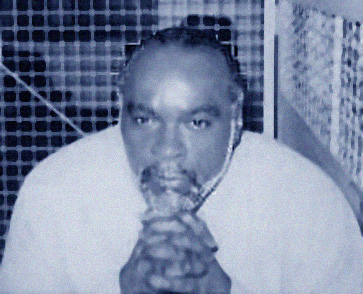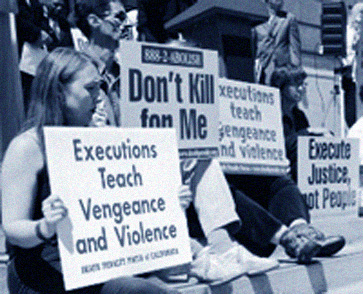A Cause Macabre: What Did We Learn from Stanley “Tookie” Williams?
Written by Natalie Martin
 So this is how the so-called “socially responsible” public unites against a controversial government sanction? Critics of the death penalty maintain a special place in my heart because I am forever locked in a love/hate relationship with them. While I appreciate their concern for the disparate numbers of African American death row inmates, compared with non-black prisoners on the “Green Mile,” I can’t help but believe that they never seem to seriously think about the poster child they choose to use for their latest “anti-capital punishment” campaign. With the blanket commutation of more than one hundred people sitting on Illinois’ death row by the state’s departing Republican governor and the influence of DNA that is causing many justices to overturn convictions, clearly the argument exists that capital punishment is a flawed practice. However, in considering a new symbol to champion their cause, did death penalty opponents really think that Stanley “Tookie” Williams was the best choice for galvanizing support?
So this is how the so-called “socially responsible” public unites against a controversial government sanction? Critics of the death penalty maintain a special place in my heart because I am forever locked in a love/hate relationship with them. While I appreciate their concern for the disparate numbers of African American death row inmates, compared with non-black prisoners on the “Green Mile,” I can’t help but believe that they never seem to seriously think about the poster child they choose to use for their latest “anti-capital punishment” campaign. With the blanket commutation of more than one hundred people sitting on Illinois’ death row by the state’s departing Republican governor and the influence of DNA that is causing many justices to overturn convictions, clearly the argument exists that capital punishment is a flawed practice. However, in considering a new symbol to champion their cause, did death penalty opponents really think that Stanley “Tookie” Williams was the best choice for galvanizing support?
(Why must I feel compelled to preface the following diatribe with the words: “I am extremely pro-black”?)
Williams is not in any way, shape or form a hero. It befuddles me that anyone—especially someone black—would align him- or herself with an admitted gang member, killer (allegedly), and criminal. Let’s, for a second, go beyond his disputed involvement with the murders of four people in 1979 and look at the spectrum of Williams’ life: founder (or co-founder, depending upon whom you believe) of the infamous Crips gang; absentee father; accessory to armed robbery; children’s book author; Nobel Peace Prize candidate (multiple nominations); alleged murderer; and death row inmate. Is it too pessimistic to point out a glaring imbalance—in terms of “good vs. bad”—when looking at his background? No amount of redemption or anti-gang books can undo the enormous negative influence his actions have had on African American culture and urban communities. Lest I sound cold and callous, I believe that the legacy of his gang affiliation far outweighs the crimes for which he was tried, convicted, and executed. In no way am I mitigating the act of murder or undervaluing the suffering of his—again, alleged—victims because of their race. What I’m proposing is that, even in their tireless effort to bring Williams to justice, the U.S. courts overlooked the additional deaths for which urban gangs are responsible—call it “the osmotic casualty factor.” For Williams, perhaps benignly, the creation of the Crips was a way to quell inner-community violence and police brutality in poorer neighborhoods; however, the formation also spawned the self-perpetuating destruction of those same black and inner-city communities through drugs and crime.
convicted, and executed. In no way am I mitigating the act of murder or undervaluing the suffering of his—again, alleged—victims because of their race. What I’m proposing is that, even in their tireless effort to bring Williams to justice, the U.S. courts overlooked the additional deaths for which urban gangs are responsible—call it “the osmotic casualty factor.” For Williams, perhaps benignly, the creation of the Crips was a way to quell inner-community violence and police brutality in poorer neighborhoods; however, the formation also spawned the self-perpetuating destruction of those same black and inner-city communities through drugs and crime.
An incalculable number of African Americans (and Latinos, and whites, ad infinitum) have died because of this man, and not a single opponent of the death penalty can deny the aftereffects of his prodigal progeny. In addition to providing black men one more stereotype that they must nullify, Williams and his clan did what I feel is worse than any routine racist act: They poisoned their own. It’s bad enough the black community must continue to fight institutionalized racism and prejudice to the point that blacks have become irreparably stratified. Now we have to deal with the self-destructive exploitation of our brethren at the hands of dope dealers who, in their ambition to achieve “white” wealth, look no further than slinging rock to their equally oppressed black neighbor? I think not.